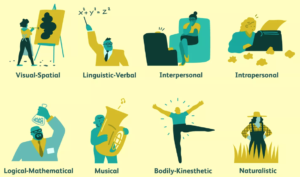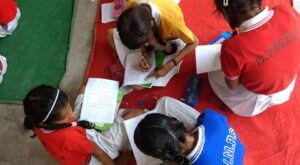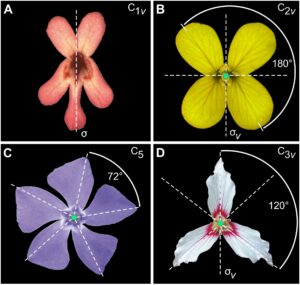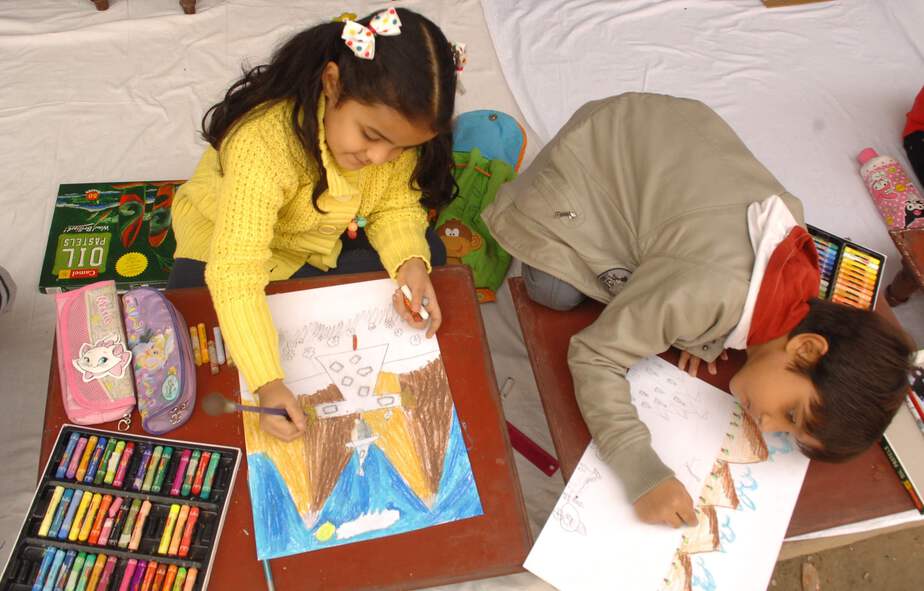Written by Ipsita Mishra
“What is Art? It is the response of an individual’s creative soul to the call of the real”
—Rabindranath Tagore
Art figures in almost every walk of life and any nation thriving on its advancement cannot turn a blind eye to creative self-expression. Art, in its various forms of dance, theatre, painting and more, is an integral part of cultures and societies all across the world, even more so in India.
While art has been a part of India’s education system for a long time, the importance it has in building a more dynamic and ready-for-the-world student population is understated, and has been missing for a long time.
Understanding Art Education
Art education is an umbrella term that includes both, learning different art forms as well as using art as a medium to learn different concepts in mainstream subjects. Art education draws its strength from the theory of Multiple Intelligences, which breaks down ‘intelligence’ beyond standard single observations — like an IQ test — to include several different measures or ‘modalities’ of intelligence. This theory is meant to break the traditional notion of intelligence and recognises that different kinds of skills are also a measure of intelligence.

There is ample evidence that point towards the benefits of such an education; in short, art has tremendous positive impact on social, educational and emotional outcomes. As such, the importance of art during school years cannot be overemphasised.
The Indian Perspective
In India, art education in schools has always found a place in curriculum. In addition to reading, writing, and math instruction, early educators understood the value of teaching students about the arts and their different forms. Unfortunately, as the focus on academic achievement — where the arts began to count as extracurriculars — began to take centre stage, art instruction took a back seat.
That being said, India does have a history of recognising the need for an integration of art in curriculum that one can be proud of.
Our policymakers have, albeit recently, realised the need for well-rounded learners, which has tilted the trend towards incorporating art as a disciplined focus in schools. Art instruction now focuses on the same expectations and instructional requirements as other core subjects.
The NCERT has taken up an active role in revitalising art education; from preparing a flexible syllabus, to developing teacher handbooks to aid in better implementation, the organisation should be given credit where it is due. The following chart looks at the recommendations they had put up in their 2010 report, Art Education in India:
While there is little doubt that art has been given a place in the education system, the lens through which we understand the importance of art must go beyond learning an art form for the sake of learning it. Even now, the viewpoint of our policies seem to be more along the lines of simple creative expression.
Designing a More Wholesome Art Experience
With the real world being at odds with the standard classroom experience, the value of a more in-touch art education must be stressed. Take for instance the fact that there is now an overload of visual information; as such, the ability to understand and extract meaningful information from visual mediums becomes paramount.

Secondly, we must build on the lesser focused part of art education — using it as a medium to understand other concepts. “The secret sauce (to support the current creative economy) comes from our ability to integrate art, music and literature with the hard sciences. Integration is the new speciality”, says Pulitzer Prize winner Thomas Friedman in his book, The World is Flat.

Even if one were to take the utilitarian perspective, and argue that these skills do not add to the employability factor, they would find themselves on the wrong side of this argument. Design thinking, a skill that can be derived directly through art education, is extremely valuable in its real world application. Jeanne Liedtka, a professor at the University of Virginia who specialises in strategic and design thinking writes,
“I have seen that another social technology, design thinking, has the potential to do for innovation exactly what TQM did for manufacturing: unleash people’s full creative energies, win their commitment, and radically improve processes….what people may not understand is the subtler way that design thinking gets around the human biases (for example, rootedness in the status quo) or attachments to specific behavioural norms (“That’s how we do things here”) that time and again block the exercise of imagination.”
Art education has a direct impact on creative thinking as well, and adds significantly to the other three 21st century skills of critical thinking, communicating and collaborating.
It is against this backdrop that the CBSE chose to implement an integrated learning system from this academic session (2019-20). It decided to integrate Art with the teaching & learning process of all academic subjects from classes 1 to 12. A move like this in required to break a system that is otherwise largely defined by rote-learning.
#Youngchefsatcbseschools #cbse
Integrating art with academic curriculum, CBSE schools are promoting creativity through various activities. 500 students of Loyola Convent School, Ranchi recently hosted an event of “fireless cooking” as a part of innovative culinary art education. pic.twitter.com/JLj0666P11— CBSE HQ (@cbseindia29) June 26, 2019
While there is a broad understanding that art is much more than the mountains and rivers we drew, the application of the same has not been particularly encouraging till now. Work needs to be done to improve the demand side as well; more awareness needs to be built among parents about the importance of such integrated learning.
It’s fair to say that we are already on the right path, albeit are slowly trudging ahead. With appropriate channels, a well integrated practical curriculum and dedicated stakeholders, it is entirely possible to give the arts a more pivotal role in the education system.
Featured image courtesy Sumesh Dugar|CC BY-SA 3.0







Excellent piece of thoughtful writing